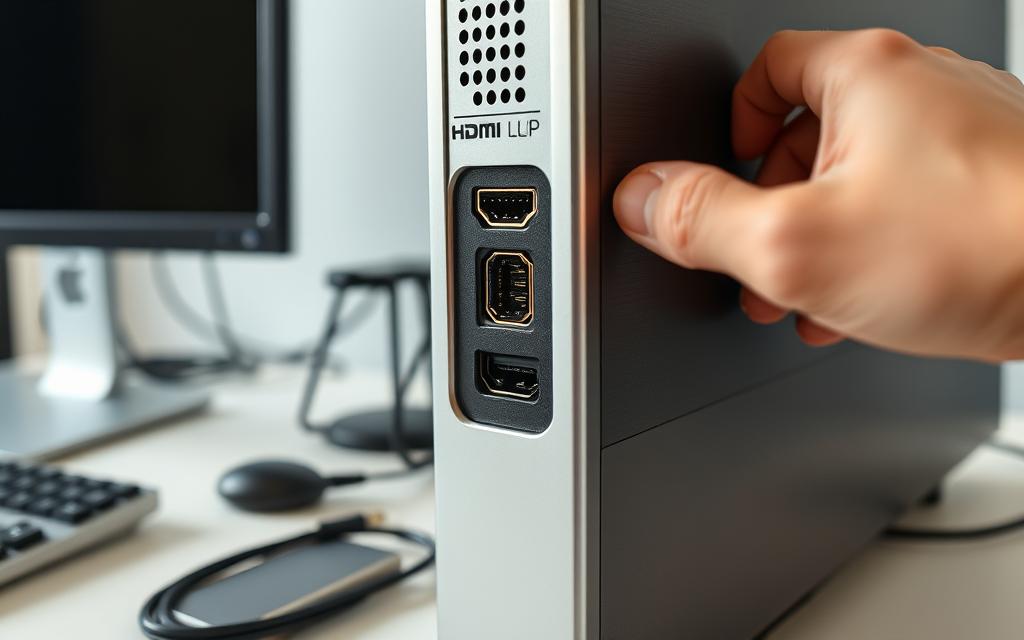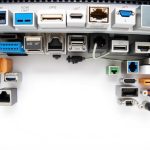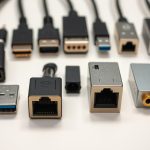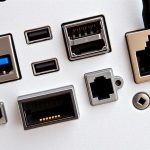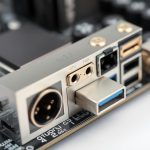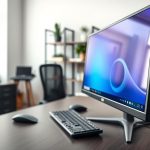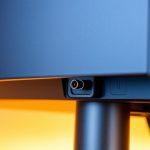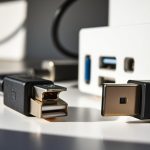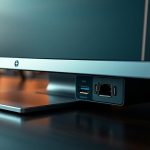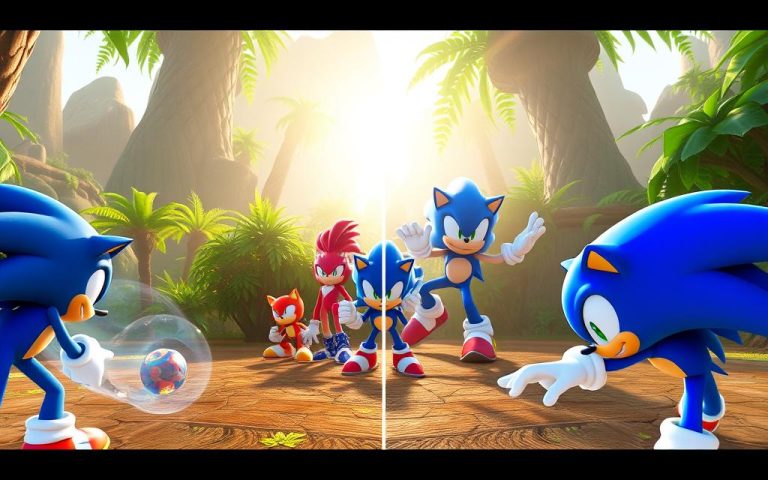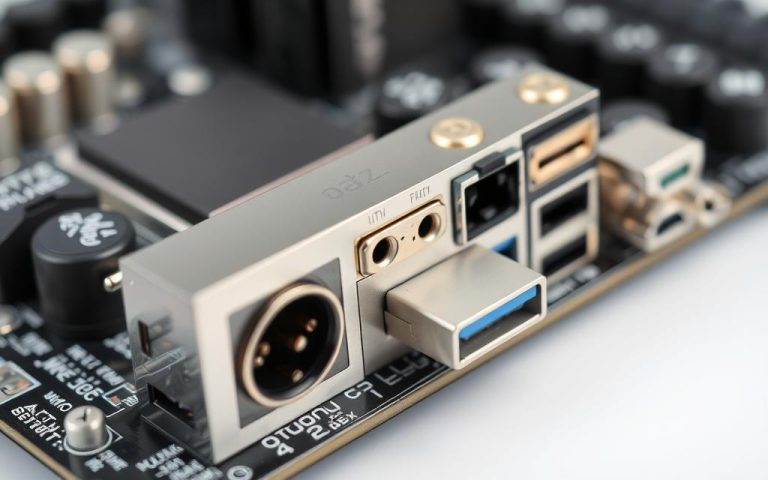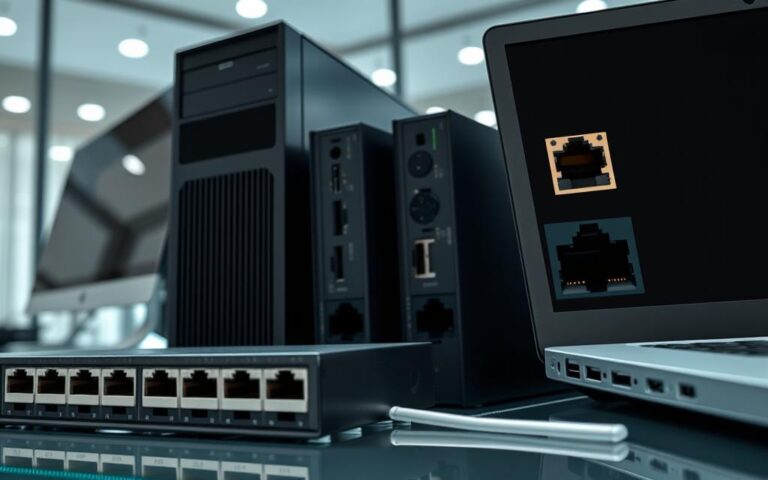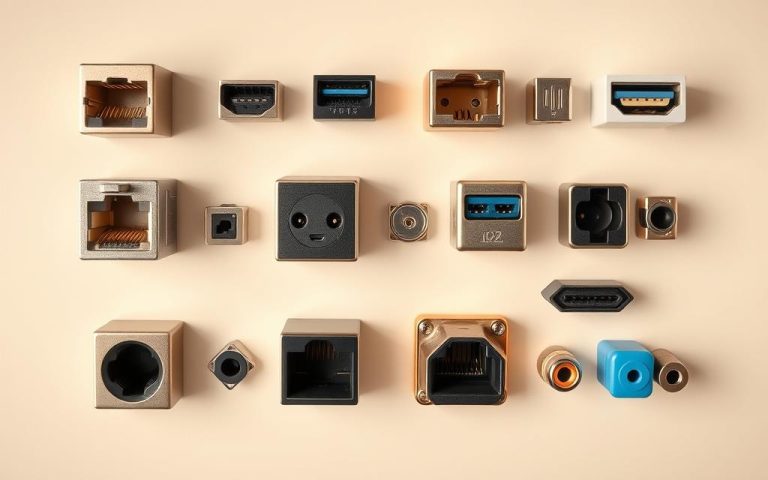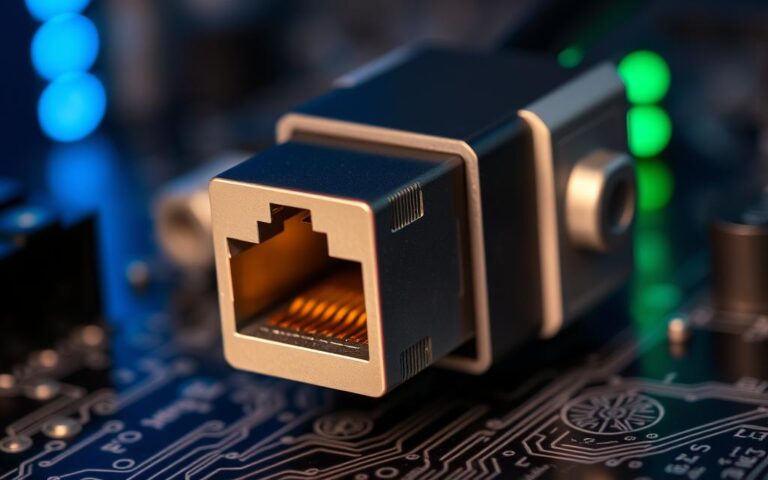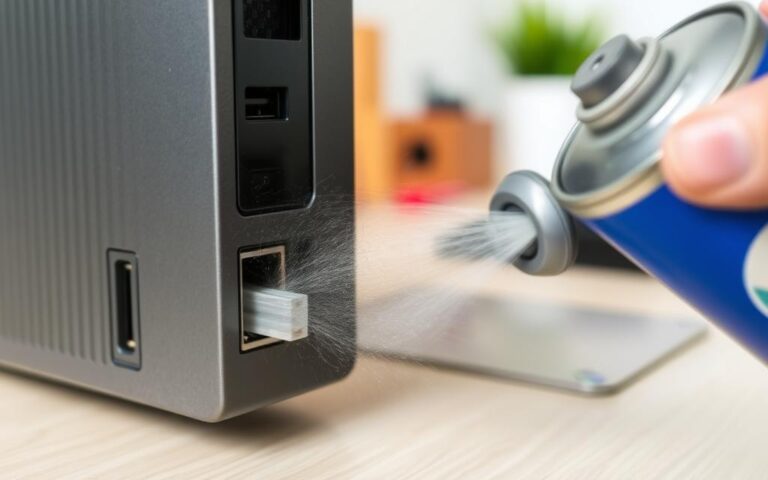Checking for HDMI Ports on Your Computer
Today, it’s vital to know your computer’s connection options, especially the HDMI port. It lets you link to monitors, TVs, or projectors with ease. This connection ensures you can enjoy high-definition sound and video. It really upgrades your computing activities.
Want to connect to another screen without hassles? Then, it’s important to know if your computer has an HDMI port. We’re here to guide you in finding out if your device is HDMI-ready. Let’s make sure you can connect smoothly and quickly.
Understanding HDMI and Its Importance
HDMI stands for High-Definition Multimedia Interface. It’s key for sending audio and video signals between devices. As our need for multimedia grows, HDMI remains the top choice for high-quality transfers.
What is HDMI?
HDMI allows for moving video and audio without losing quality. It started in 2002 and has been updated many times. The newest version, HDMI 2.1, came out in 2017. It supports 4K at 120 FPS and 8K at 60 FPS. This means much better pictures on supporting screens.
The Role of HDMI in Modern Computing
HDMI is more important than ever in today’s tech. It makes connecting devices like TVs, laptops, and game consoles simple. With one cable for both sounds and picture, it cuts down on mess. It also makes things more convenient.
Common Devices That Use HDMI
Many devices use HDMI, changing how we have fun and work. Common ones are:
- Televisions
- Media players
- Projectors
- Computers
These gadgets use HDMI to stream content and boost multimedia quality. HDMI’s widespread use highlights its value in home and work spaces, where top-notch audio and video are crucial.
| HDMI Version | Maximum Bandwidth | Supported Resolutions |
|---|---|---|
| HDMI 1.0 | 4.95 Gbps | 1920 x 1080 at 60Hz |
| HDMI 1.3 | 10.2 Gbps | 3840 x 2160 at 30Hz |
| HDMI 2.0 | 18 Gbps | 3840 x 2160 at 60Hz |
| HDMI 2.1 | 48 Gbps | 7680 x 4320 at 60Hz |
How to Identify HDMI Ports on Your Computer
Finding HDMI ports on your computer is key for hooking up to screens like TVs. You can spot these ports by looking at your computer closely and checking its details. Here’s how you can make it easier.
Visual Inspection of the Computer
Start by looking closely at your computer. Check its sides and back for any ports. HDMI ports are rectangle-shaped with two slanted corners. They might even say ‘HDMI’ to help you spot them. Using this visual HDMI check is a fast way to see if you can connect.
Checking the Back of the Motherboard
If you have a desktop, look at the motherboard’s back. You’ll see many plugs and slots there. HDMI ports are often next to USB or Ethernet ports. Looking here helps you find the HDMI ports clearly and avoid mix-ups.
Using Manufacturer Specifications
If you’re still not sure, check the maker’s specs. Read the manual or go to their website for info. This way, you’ll know for sure if your computer has HDMI ports. This official info makes it easy to spot HDMI ports confidently.
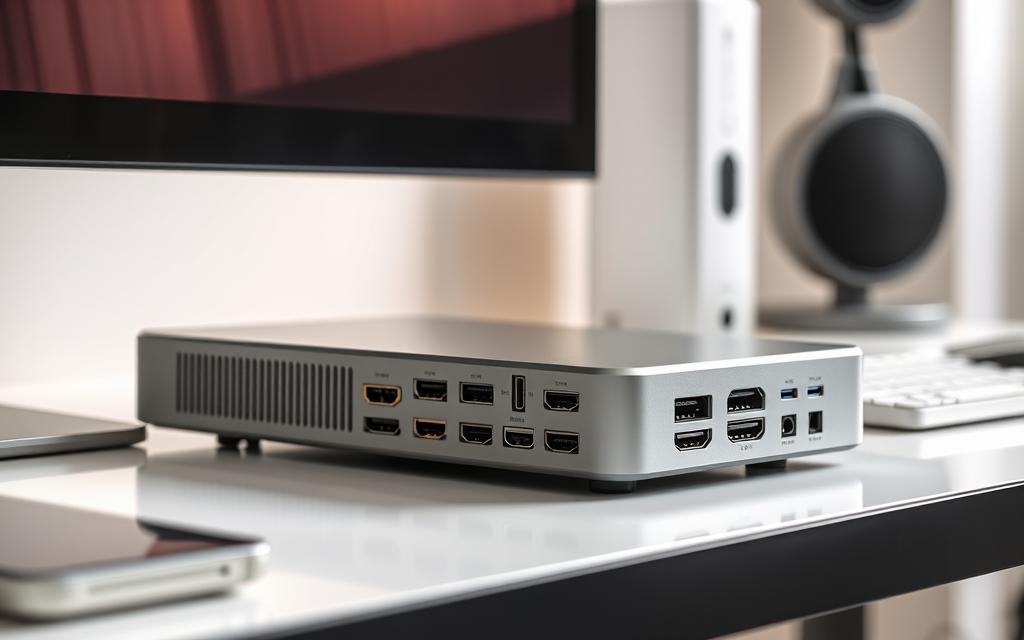
Does My Computer Have an HDMI Port?
To find out if your computer has an HDMI port, check the model’s details. Older computers might not have this key connection. By looking up your device’s specs, you can see if it supports HDMI. You can also consider other video connections like DVI and DisplayPort as alternatives.
Evaluating Computer Model Specifications
Start by checking your computer model on the manufacturer’s website. The details there will tell you if it has an HDMI port. Modern computers, especially those with powerful GPUs like the RTX 2080 Super, often have HDMI. Even computers with Intel integrated graphics might have it, depending on their setup.
Finding HDMI Compatibility in Older Models
Many old computers don’t have HDMI ports. They may have DVI or VGA outputs instead. When you want to connect to new screens, HDMI might seem missing. Check what ports your old computer has. You might need an adapter to use HDMI with it. Knowing what connections your system has helps you match it with the latest displays.
Alternative Connections: DVI and DisplayPort
Don’t worry if there’s no HDMI port. Look into other connections like DVI and DisplayPort. These can also work with HDMI through the right cables and adapters. For top-quality gaming or graphic tasks, connect your monitor to a dedicated GPU if possible. Doing so boosts your computer’s graphics power, perfect for setups like the i9-9900KF without built-in graphics.
Troubleshooting HDMI Connection Issues
HDMI connection problems can be really annoying. Knowing what signs to look for helps fix issues faster. You can try many steps at home before needing an expert. But sometimes, you might need a professional’s help if the problem won’t go away.
Common Signs of HDMI Port Issues
Spotting HDMI port problems early makes fixing them easier. You might notice:
- A black screen with no input shown.
- Visuals that are distorted or a display that flickers.
- No sound when you’re playing something.
- A connection that feels loose, hinting at physical damage.
Catching these signs early helps avoid bigger problems with HDMI troubleshooting.
Steps to Fix HDMI Connection Problems
You can try several things to sort out HDMI issues:
- Make sure cable connections are tight and secure.
- Try using different HDMI cables to see if there’s a fault with the cable.
- Tweak display settings or try different modes in Windows.
- Keep graphics drivers up to date, either manually or with tools like Driver Easy.
- Reboot devices and reconnect HDMI to restart the system.
These steps often fix common HDMI problems, making things run smoother.
When to Consult a Professional Repair Service
If simple fixes don’t work, it’s time to see an expert. When hardware seems faulty or there’s visible damage, a pro is needed. They fix issues correctly, saving you time and preventing more damage.
Conclusion
Finding HDMI ports on your computer is key to better media experiences. Modern laptops and desktops usually have HDMI outputs. These support high resolutions like 1080p to 4K, making visuals clearer.
Dealing with HDMI problems is also crucial for smooth device use. Knowing common issues like “No Signal Detected” helps avoid frustration. Keep HDMI cables tidy and consider better quality ones for improved performance.
If you’re still having trouble or need more help, check out this resource. With the correct information and tools, you can solve HDMI problems. This ensures a great experience on all your devices.
FAQ
What does HDMI stand for?
HDMI means High-Definition Multimedia Interface. It’s a special interface for sending video and audio that’s not compressed.
How do I find the HDMI port on my computer?
Look on your computer’s side or back to find the HDMI port. It’s a rectangle slot often marked as HDMI.
Can I use older computers with HDMI TVs?
If your older computer doesn’t have HDMI, it might have DVI or VGA. You’ll need to check if they can work with your TV’s HDMI.
What should I do if my HDMI connection is not working?
Try these steps: check your cable connections, try different cables, change display settings, and update your device drivers.
How can I tell if my computer supports HDMI?
To see if your computer has HDMI, check its specs. Look in the user manual or on the maker’s website, especially for newer models.
What are some alternative connections to HDMI?
Look at DisplayPort or DVI if you don’t have HDMI. Adapters exist but they may cost more and need extra work.
When should I seek professional help for HDMI issues?
If you’ve tried fixing it but still have issues, see a professional. This is vital if there’s damage to the HDMI port or inside your device.
What types of devices commonly use HDMI connections?
HDMI connections are often found in TVs, media players, projectors, and computers. They transmit high-definition sound and pictures.
What are some signs that my HDMI port may be faulty?
If you see a black screen, get “no input” alerts, spot weird visuals, or the connection feels loose, your HDMI port might be breaking.

